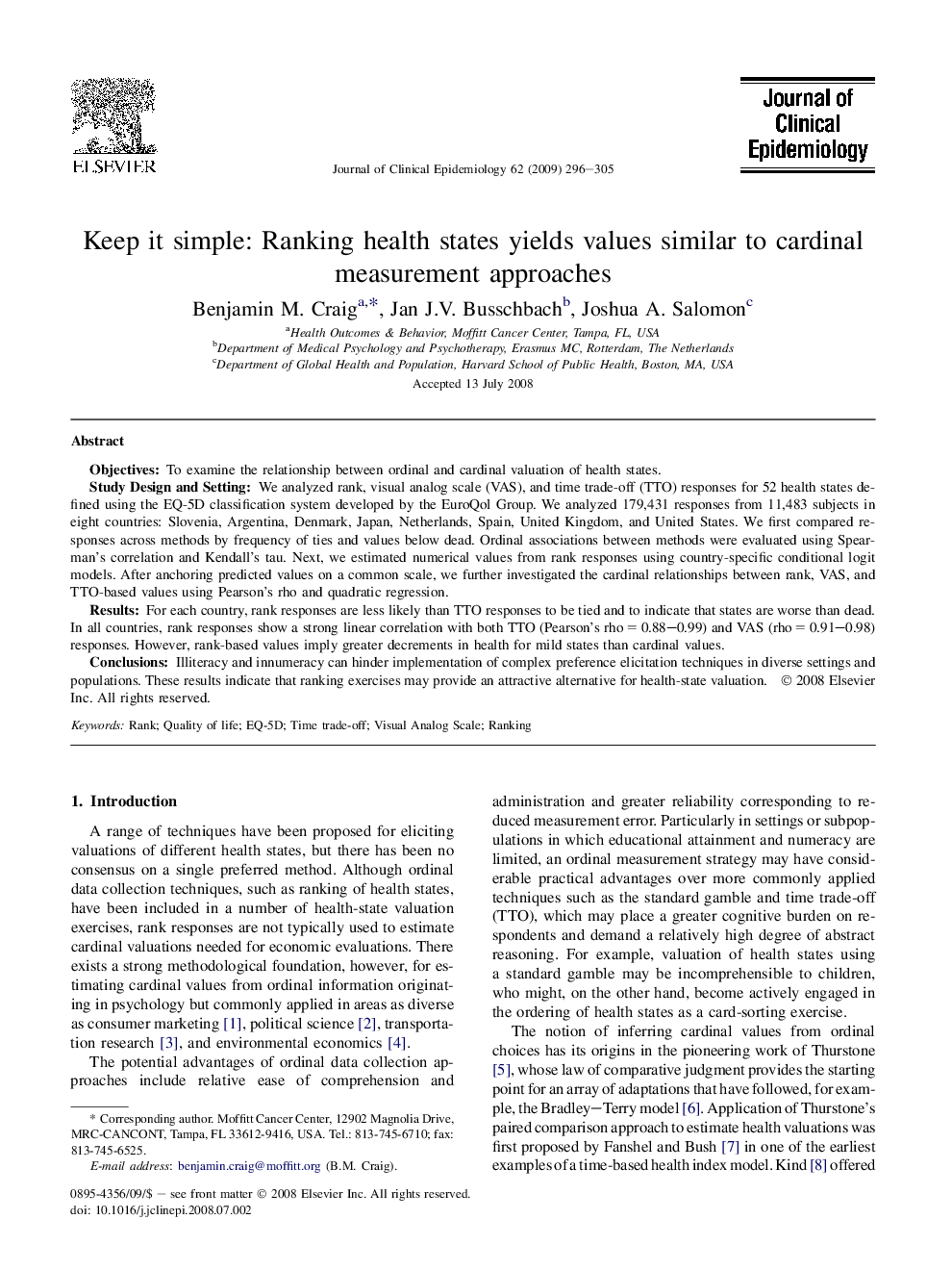| Article ID | Journal | Published Year | Pages | File Type |
|---|---|---|---|---|
| 1083656 | Journal of Clinical Epidemiology | 2009 | 10 Pages |
ObjectivesTo examine the relationship between ordinal and cardinal valuation of health states.Study Design and SettingWe analyzed rank, visual analog scale (VAS), and time trade-off (TTO) responses for 52 health states defined using the EQ-5D classification system developed by the EuroQol Group. We analyzed 179,431 responses from 11,483 subjects in eight countries: Slovenia, Argentina, Denmark, Japan, Netherlands, Spain, United Kingdom, and United States. We first compared responses across methods by frequency of ties and values below dead. Ordinal associations between methods were evaluated using Spearman's correlation and Kendall's tau. Next, we estimated numerical values from rank responses using country-specific conditional logit models. After anchoring predicted values on a common scale, we further investigated the cardinal relationships between rank, VAS, and TTO-based values using Pearson's rho and quadratic regression.ResultsFor each country, rank responses are less likely than TTO responses to be tied and to indicate that states are worse than dead. In all countries, rank responses show a strong linear correlation with both TTO (Pearson's rho = 0.88–0.99) and VAS (rho = 0.91–0.98) responses. However, rank-based values imply greater decrements in health for mild states than cardinal values.ConclusionsIlliteracy and innumeracy can hinder implementation of complex preference elicitation techniques in diverse settings and populations. These results indicate that ranking exercises may provide an attractive alternative for health-state valuation.
